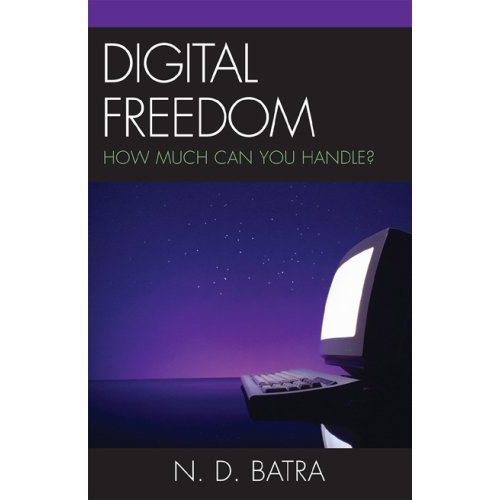Honest brands create good fortune
CYBER AGE by ND Batra
From The Statesman
Last month, the world’s biggest retailer Wal-Mart sent a wave of joy by announcing that it would sell about 300 generic prescription drugs ranging from allergy medication to antibiotics at $4 for a month’s supply.
Not to fall behind its rival, another major retailer, Target, announced that it, too, would match Wal-Mart’s prices.
In a culture of open marketplace capitalism, a company has to come up with innovative solutions to stay competitive. A company is nothing but its reputation and maintaining it is a big challenge.
Coca Cola and Pepsi have not come up with a creative solution to stay alive in India. Desperate calls from Washington to New Delhi won’t help the cola companies. Nor would the court battles. Reputation is the foundation of trust and loyalty, which gives stakeholders confidence in dealing with the company.
A company’s identity and image (along with its philanthropy) are the building blocks of its reputation. Wal-Mart like Bangalore has a distinct identity, a character. Identity is a company’s assertion of its individuality and embodies the company’s vision, its reason for being there. It sums up its business case.
The image of a company is the distinct memorable impression in the minds of the people as they interact with the company.Together, identity and image raise the profile of a company, its reputation, its significance beyond commercialism and profit making. Americans know what Bangalore is, but not Kolkata, not as yet.
“A company’s identity”, says Paul Argenti of Dartmouth’s Tuck School in one of his books, “is the visual manifestation of the company’s reality as conveyed through the organization’s name, logo, motto, products, services, buildings, stationery, uniform, and all other tangible pieces of evidence created by the organization and communicated to a variety of constituencies”.
A company’s name, symbols, products, services, employees, buildings, its tangibles and intangibles, are not a cluster of facts but a dynamic system that creates specific value and meaning for the stakeholders.
Stakeholders’ perception of the company, however, emerges from the totality of the impression. While a company might do its utmost to build and control its identity, it cannot totally control the image, the impression, the perception, the public has about it. A company’s identity and the image are never the same, but the closer they are, the better is the reality, which is the basis of the company’s reputation. While it is desirable to achieve consistency in identity, McDonald’s golden arches, for example, the perception of the company should no be expected to be the same in every country.
McDonald’s is one of the fast food chains in the USA but in China it has the image of a desirable American food, desired by the young and the old, in spite of the fact that the identity of the company, its sounds and images, are globally quite consistent.
In France, the company has a low public image, in spite of the fact that one of its popular products is called French Fries. Of course, there’s nothing French about them. A corporate identity must embody the company’s core values, the sum and substance of what is called its business case.
Identity is the visualisation of its mission, and answers the unasked question: Who are we? What are we doing here? These are the questions Coke and Pepsi should be asking in India.
Last week, writing in The Wall Street Journal, Infosys Technologies’ visionary corporate statesman NR Narayana Murthy said, “Clear conscience ~ clear profit…. When in doubt, disclose.” Coke and Pepsi should listen to him.
While a consistent and well-defined identity a company projects before the public helps it to build a perception of the company about what it stands for, the reputation is built over time and depends upon how the company conducts itself.
A strong reputation matters because it enhances a company’s attractiveness, softens criticism, and creates public support for a company’s activities. Customers don’t mind paying a little extra for a product when it comes from a company with a strong reputation for quality and fairness. A company with a strong reputation attracts talented employees, who like to stay with the company for personal and professional growth.
The likeability of the company by the employees and their day-to-day interaction with the various stakeholders adds to the reputation of the company.Employees become the corporeal identity of the company embodying its values and mission. But when a CEO is found with his pants down or his hand in the cookie jar, as it has happened with the global accounting firm Arthur Andersen, for example, the reputation comes crashing down.
No amount of identity metamorphosis could bring the reputation back. Arthur Anderson self-destructed, as did Enron, the infamous energy giant.
Apart from the integrity of corporate leadership that inspires respect and loyalty from employees and the general public, companies like Microsoft have enhanced their reputation by carrying out global philanthropic activities.Corporate philanthropic giving at local, national and global levels should become part of a company’s business case.
Philanthropic activities of a company must be thoughtfully and tastefully publicised through corporate advertising to project the humane side of the company as Microsoft is doing through its global foundation to fight AIDS and tuberculosis. Some companies make use of institutional advertising to let the public know how involved they are in adding to the public good, just as Beyond Petroleum (BP), formerly British Petroleum, has been doing with its corporate ads, informing the public about its commitment to the development of alternative sources of energy.BP looked green until its recent pipeline troubles in Alaska.
No company can ever rest in peace, thinking that its reputation is secure. Reputation is not a constant but a corporate variable.
(Dr Batra teaches communications and corporate diplomacy at Norwich University, Vermont, USA)
Tuesday, October 03, 2006
This is the American Report
at Tuesday, October 03, 2006 Posted by Narain D. Batra
Subscribe to:
Post Comments (Atom)

No comments:
Post a Comment